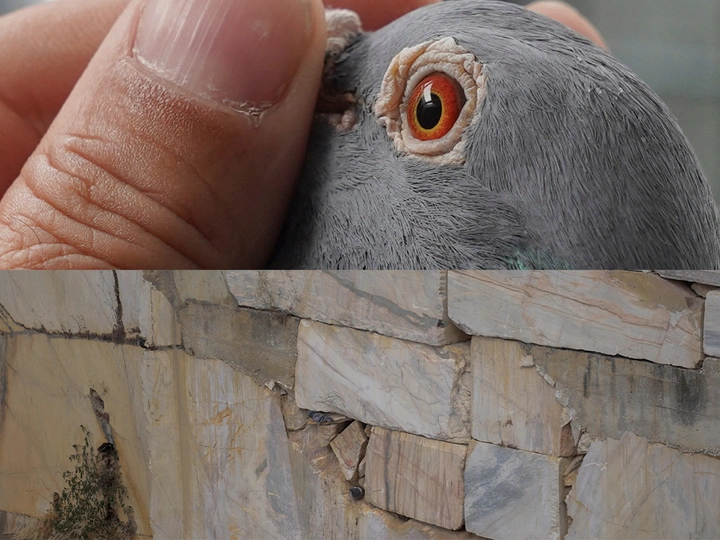Columba Livia Domestica

Tiago Ascensão
António Pedro Faria
Verónica Pinto
Catarina Ruivo
Miguel Santos
Nádia Santos
João Francisco Sousa
Miguel Teodoro
Born from concerns about the relationship between architecture, society, and territory, FIELD collective brings together a multidisciplinary team with diverse and complementary backgrounds, with shared experience in editorial work, curatorial practice, and research projects across the fields of architecture, scenography, art, and design.
For the collective, artistic research and territorial analysis are guided by the intention to operationalize architectural and spatial analysis tools, combining them with anti-extractivist practices and contested territories that confront projects and logics which overlook the temporal and interspecies complexity of cultural and environmental ecosystems.
The collective started as an informal interdisciplinary group of citizens and creative practitioners. Their first official joint effort was the curatorial proposal for the Official Representation for the Portuguese Pavillion at the 19th Venice Architecture Biennale, with the project “Reclaim, Repair, Regenerate: Towards a Constellation of Protocols”, which was one of the 3 finalists. The proposal calls to action in response to the multidimensional crisis. It highlighted five forms of extractivism in conflict with civic resistance movements that defend environmental and human values. Through representation and mediation, an open-source protocol manual and a network of mutual cooperation was proposed.
Although the Portuguese Pavillion proposal was not selected, this process gave the opportunity to think about what a national representation could be in complex times, proposing a curatorial vision for a pavilion that would work with local and international citizens movements, articulating and testing alternative futures for spatial, social, and environmental justice.
FIELD recently won the Diogo Seixas Lopes MAC/CCB fellowship with a project called “Columba Livia Domestica: Critical Agent of Decoding Spatial Politics”, that is currently under development.
Throughout history, the relationship between humans and pigeons has oscillated between reverence and marginalization. From messengers to symbols of resistance; from sentinel species to urban pests, pigeons challenge rigid categorizations of domesticated and wild, useful and disposable, center and periphery.
The project maps and activates transterritorial connections between rural peripheral areas and urban centers, rethinking the interaction between humans and Columbidae beyond conventional narratives of pest and control. This is achieved by fieldworks that identify and document case studies that are representative of these spatial and cultural tensions around human-pigeon interactions, such as as vernacular dovecoats, water dams, obsolete grain silos, or pigeon fanciers' dovecoats.
In this research we use human-pigeon interactions as a lens to look at territory, allowing a broader and unexpected comprehension of spatial politics. The project has an online platform that holds a constellation that articulates and navigates through the case studies. Each image contains information related to a specific territorial tension, while the top bar outlines a path that connects the different spaces through human–pigeon relationships unlocking their intrinsic spatial politics.
Besides this online ongoing platform, the research uses film as a form of inquiry to these contested sites. Acting as a tool to analyse the website’s constellation, a two-channel video installation juxtaposes images and articulates case studies by tracing parallels between them, exploring themes as marginalization and control, conservation and integration and commodification and fertility.
During the last months of 2025, there will be released a series of essays that will expand and explore deeper the ongoing research.